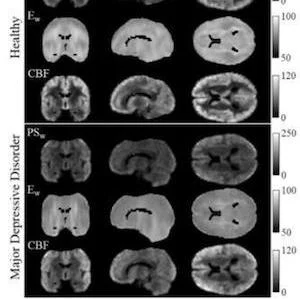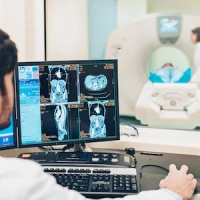New findings from two MRI studies presented at the annual meeting of the Radiological Society of North America (RSNA) provide important insights on the mechanisms behind depression.
Major depressive disorder (MDD) is a debilitating mental disorder that affects over 100 million people worldwide. However, as noted in the two studies, not much is known about the pathophysiology of brain disorders which hinders the effectiveness of treatments.
You might also like: Survived a Heart Attack? But What About Depression?
The first study involved the use of a new MRI technique, called intrinsic diffusivity encoding of arterial labelled spins (IDEALS), which allowed researchers to examine disruptions in the blood-brain barrier (BBB) associated with major depressive disorder.
The BBB is a network of blood vessels and tissue that protects the brain from foreign substances. Using the new MRI technique they developed, the researchers studied BBB water permeability – ie, the movement of water out of the blood vessels and into the brain tissue – in 14 MDD patients and 14 healthy individuals.
Kenneth T. Wengler, PhD, Columbia University in New York City, and co-researchers observed that less water moved from inside the blood vessels to outside in the MDD group, representing disrupted BBB integrity. This difference was particularly large in two grey matter regions of the brain: the amygdala and the hippocampus.
These results could help inform the development of more effective treatments for MDD, according to Wengler.
In the second study, University of North Carolina (UNC) researchers looked at abnormalities in the complex network of connections in the brain known as the connectome for their role in depression.
The UNC team compared 66 adults with MDD and 66 matched healthy controls during wakeful rest using functional MRI (fMRI) and a newly developed multiscale neural model inversion framework that linked the brain's microscopic circuitry with its larger-scale interactions.
Results showed MDD patients had abnormal patterns of excitation and inhibition at the dorsal lateral prefrontal cortex, a brain area important to cognitive control functions, including the regulation of the amygdala, a key region embedded deep in the brain for expression of emotion.
The research team also found that recurrent excitation in the thalamus, an area of the central brain that is also responsible for emotional regulation, was abnormally elevated in patients with major depressive disorder.
"Current methods of studying the brain provide a superficial understanding of connectivity," study co-author Guoshi Li, PhD, from the Image Display, Enhancement and Analysis (IDEA) group at UNC pointed out. "This method allows us to identify impaired connectivity within each brain region, making it a potentially more powerful tool to study the neuromechanism of brain disorders and develop more effective diagnosis and treatment."
Source: Radiological Society of North America
Image credit: Radiological Society of North America










